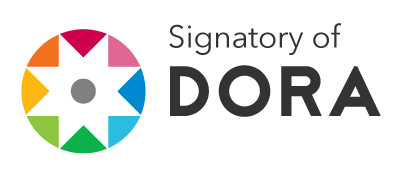Primitively Eusocial Behavior Observed in Colonies of Augochlora amphitrite (Hymenoptera: Halictidae) Reared in Laboratory
DOI:
https://doi.org/10.13102/sociobiology.v65i4.3484Keywords:
Artificial nests, social interactions, wild bees, AugochloriniAbstract
The present study provides evidence of primitively eusocial behavior in Augochlora amphitrite (Schrottky). Bees were reared in laboratory nests and observed throughout their nesting cycle. Introduced foundresses constructed nests solitarily, but upon the emergence of the first daughter their activities changed drastically, marking the onset of a social phase. The colonies presented two well defined female castes according to their physiology, size and behavior. Foundresses monopolized oviposition, displayed low rates of nest construction, guarding, and pollen collection, they were the individuals that initiated social interactions, and were statistically larger. Daughter bees were smaller, with undeveloped ovaries, performed most tasks at the nest and were the subordinate individuals in social interactions.
Downloads
References
Coelho, B.W.T. (2002). The biology of the primitively eusocial Augochloropsis iris (Schrottky, 1902). Insectes Sociaux, 49: 181-190.
Dalmazzo, M. & Roig-Alsina, A. (2011) Revision of the species of the New World genus Augochlora (Hymenoptera, Halictidae) occurring in the southern temperate areas of its range. Zootaxa 2750: 15–32.
Dalmazzo, M. & Roig Alsina, A. (2012) Nest structure and notes on the social behavior of Augochlora amphitrite (Schrottky) (Hymenoptera, Halictidae). Journal of Hymenoptera Research 26: 17–29. doi: 10.3897/JHR.26.2440
Dalmazzo, M. & Roig Alsina A. (2015) Social biology of Augochlora (Augochlora) phoemonoe (Hymenoptera, Halictidae) reared in laboratory nests. Insectes Sociaux 62:315–323. doi: 10.1007/s00040-015-0412-8
Eickwort , G. C. & Eickwort, K. R. (1973) Notes on the nests of three wood-dwelling species of Augochlora from Costa Rica (Hymenoptera: Halictidae). Journal of the Kansas Entomological Society 46: 17–22.
Michener, C. D. (1990) Reproduction and castes in social halictine bees. In: Engels, W. (Ed.) Social Insects: An Evolutionary Approach to Castes and Reproduction (Pp. 77-121). Springer, Berlin Heiderbelrg-New York..
Michener, C. D. (2007) The bees of the world. 2nd Ed. Johns Hopkins University Press, Baltimore y Londres.
Stockhammer, K. A. (1966) Nesting habit and life cycle of a sweet bee, Augochlora pura. Journal of the Kansas Entomological Society 39: 157–192.
Wcislo, W. T., Gonzalez, V. H. & Engel, M. S. (2003) Nesting and social behavior of a wood-dwelling Neotropical bee, Augochlora isthmii (Schwarz), and notes on a new species, A. alexanderi Engel (Hymenoptera: Halictidae). Journal of the Kansas Entomological Society 76(4): 588–602.
Zillikens, A., Steiner, J. & Mihako, Z. (2001) Nest of Augochlora (A.) esox in bromeliads, a previously unknown site for sweat bees (Hymenoptera: Halictidae). Studies on Neotropical Fauna and Environment 36(2): 137–142. doi: 10.1076/snfe.36.2.137.2133
Downloads
Published
How to Cite
Issue
Section
License
Sociobiology is a diamond open access journal which means that all content is freely available without charge to the user or his/her institution. Users are allowed to read, download, copy, distribute, print, search, or link to the full texts of the articles in this journal without asking prior permission from the publisher or the author. This is in accordance with the BOAI definition of open access.
Authors who publish with this journal agree to the following terms:
- Authors retain copyright and grant the journal right of first publication with the work simultaneously licensed under a Creative Commons Attribution License that allows others to share the work with an acknowledgement of the work's authorship and initial publication in this journal.
- Authors are able to enter into separate, additional contractual arrangements for the non-exclusive distribution of the journal's published version of the work (e.g., post it to an institutional repository or publish it in a book), with an acknowledgement of its initial publication in this journal.
- Authors are permitted and encouraged to post their work online (e.g., in institutional repositories or on their website) prior to and during the submission process, as it can lead to productive exchanges, as well as earlier and greater citation of published work (See The Effect of Open Access).



 eISSN 2447-8067
eISSN 2447-8067










